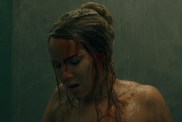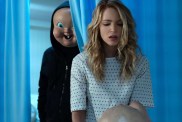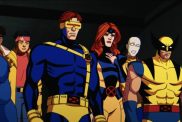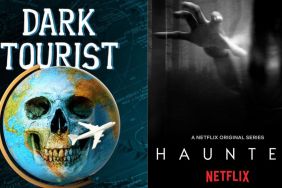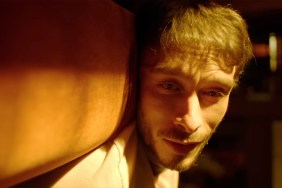At the height of his popularity, Freddy Krueger took his crusade against the citizens of Springwood to the small screen. But television only served to give him a few silly memes and dull his claws. Freddy’s Nightmares were about to be unleashed and no one was ready — but not for the reasons they thought.
“This time it wasn’t one of your nightmares. This one was mine.”
The full name for the program was Freddy’s Nightmares: A Nightmare on Elm Street: The Series. Not only is that entirely too much, but the double colon use is obnoxious. The show ran from 1988-90 and produced a total of 44 hour-long episodes over the two seasons, offering diehard fans a chunk of extra Nightmare. So long as quality isn’t a big sticking point, at least.
Many feel this is a worthwhile journey due to its obscurity – though it was streaming for free on Tubi for a while. It also features the return of Robert Englund as the titular slasher, who agreed to do the project after being promised he could direct some episodes. His involvement in front of the camera isn’t substantial after the pilot, only featuring as the primary antagonist for eight or so installments, but he is in each at least as a host. Freddy’s antics in this role are cheesy and pun-filled, yes, but some of his entrances are especially and memorable.
The show tries to keep some of the aesthetics from the films, but maybe a few of the wrong ones. The most important thing this series taught me was that Krueger is also musically inclined, playing electric guitar and manning the turntables. Many fans enjoy the first episode, “No More Mr. Nice Guy,” which acts as a prequel to the films released at that time, showing the events that led up to Freddy’s death as well as how he sees the world during the trial. Even if later projects would contradict these scenes (not sure anyone seriously thought this stuff was canon, especially since Freddy killed one of the series’ writers in an episode) it is entertaining to see an early interpretation. There are some genuinely well-made segments, and then some that aren’t worthy of being compared to the bad Goosebumps stories.
The show gained some recognition for its unique approach to storytelling, where most episodes consist of two stories that are loosely linked together. The first segment typically establishes several characters or a common background while the second switches focus to a minor character or changes the motivation for one of the primary players. It wasn’t just a way to show off some clever writing and cram two different plots into one episode, but often allowed exploration of similar themes or the same one from different perspectives. The connection between the two stories was stronger at some points, which made it difficult for the few networks that attempted to show Freddy’s Nightmares as a 30-minute program.
The dual story structure is a fantastic idea when it works, but in many cases, one part is much more engaging than the other. Sometimes segments would feel repetitive, fail to give asshole characters their comeuppance, or simply have lackluster resolutions. I was floored when “School Daze” ended on an uncharacteristic positive note. A big issue is the overreliance on a dream within a dream, often leaving viewers to simply not react because it’s most likely not real until the end of the segment. Dreams are an element expected in Freddy’s tales, but it can lead to some formulaic writing. It’s odd to say that a show already split into two stories may be too long, but certain plots either feel like they need much more or a little less time.
The acting is mostly all over the place, with some of it being humorously bad, or having solid performers overdo it on purpose. There are numerous recognizable faces, especially from other notable horror franchises and sci-fi shows like Star Trek. Not only are there multiple references to that franchise, but Tim Russ actually plays a character named Dr. Picard years before he would serve on Voyager as Tuvok, while Jeffrey Combs and Marc Alaimo pop up as well. Lori Petty, George Lazenby, Dick Miller, and some new guy named Brad Pitt all show up among a slew of others. These episodes also boasted renowned directors like Tobe Hooper (who directed the pilot,) so it’s hard to think talent was one of the show’s issues.
The behind-the-scenes production is more interesting than the series itself, however. The quality of each episode varies and it’s clear that after the first handful, things began to slip a bit. Sets were small, but often well-decorated and used some excellent colors to accent the dream-like states. Many of the stories take place at the local high school, and the establishing shots may look familiar from several of the Elm Street movies or Buffy the Vampire Slayer (1997). In some instances, the make-up and practical effects are quite good, but in many other cases, they are almost inexcusable. Even the people who worked on the show often joked about how cheap it became.
William Malone, who acted as a writer and director for Freddy’s Nightmares, said that the show was essentially “just a cash cow” released to milk the character’s popularity at the time. Knowing this, many of the people in charge started doing whatever they wanted to with the production. Several of the stories were intentionally rough, bucking against popular trends and political correctness of the time. Others some used these episodes as a learning tool or place to try out unconventional ideas. Several directors intentionally shot extra footage that was overly violent and full of nudity, knowing there was absolutely no way it could make the final cut due to airing in syndication. The episode “Safe Sex” reportedly had eight minutes taken out and still needed to be re-edited to make it fit for broadcast.
The sex appeal was dialed up a bit for network television standards. Several attractive ladies in bikinis and lingerie are featured, while some of the themes help push the lewdness further. Freddy’s Nightmares was supposed to air late at night where they could get away with more of this, but several channels decided to play the episodes in the afternoons. This resulted in numerous complaints and trouble with the sponsors. Some networks even stopped right out showing it to avoid any controversy, giving Freddy another boost to his reputation. But combined with budget concerns, this ensured the series couldn’t last. When it was officially canceled, most of the crew moved over to Tales from the Crypt, enriching another anthology horror series.
Freddy’s Nightmares is an interesting tale of an icon gorging on its own popularity. So much so, in this case, that his extreme excess neutered the multitude of scary stories he wanted to share. It sounds like the people who made it had a blast at least, but this is one pack of nightmares that are thankfully not chronic.

